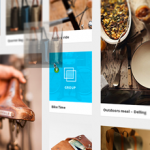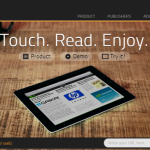The other day I was visiting an event on design-led innovation in the Disseny Hub of Barcelona. Since design, design thinking and user experience are becoming more apparent in the innovation process, in this post I would like to share some highlights. It is inspired by the talk of Smart Design co-founder Dan Formosa and considers how to achieve great design that exceeds expectations and has the potential to change the world. Design can be reflected in a product, service or brand.
Putting “the person” in the center
People don’t use your product or service; a person does.
This notion implies that you shouldn’t design for the average and general individual, because you won’t find them. It requires deep understanding of relationships. When trying to solve a problem, ability would be of much more importance than for instance age. Stereotyping leads to untrue perceptions. To really design for a person, one should do fieldwork research, observe persons, getting out in the real world (experience), collaborate with users, have multidisciplinary teams, use visualization and look for parallel examples. ‘How can this principle work here?’ Only after that phase concurrent business analysis and project management come in. But even more important as a kick off, is the following:
The power of asking the (right) questions
‘If I had an hour to solve a problem I’d spend 55 minutes thinking about the problem and 5 minutes thinking about solutions.’
Albert Einstein
The words of a genius speak for themselves. The question will guide your line of reasoning. A question can be challenged with another question; open or closed, constructive or provocative. But all have the goal to make clearer what you want to achieve, what do you want to solve? It is an important asset to know how to ask questions, which is often overlooked because we tend to jump straight into answering. Be careful that the question in itself isn’t already a delusion or hidden statement. For example: Which one of these items do you like the best?
– one; assuming that only one stands out
– like; assuming that you like the item
The strength of questions is that it invites comment and inspires in an open way discussion. There is no one standard good question. Exploring the right question is part of the design process.
The attributes of design
When having the question in place, you can start to visualize the thinking. To help the line of reasoning, integrative thinking and some attributes related to the person should be considered.
- Gender
- Cultural and subcultural perceptions
- Social issues and emotional value
- Geographic characteristics
- Mechanical, physiological and physical insight (touch points)
- Statistics
- Environment
A person is not interested in what you do, but what you stand for. Hence, translated to a product, service or brand, this should be apparent. When being confronted with a new ‘thing’, a person will go through different emotional phases. You can see it a bit like the first date, first kiss, first disappointment… When designing a solution, you should be aware of the relationship your offer will effect the person and how it will take part in its life. Of course, there are some traits that enhance the acceptance by the end users:
- Functionality & added value
- Ease of access & use of the daily life habits
- Safety aspects
- Costs & financing issues
- Ethical aspects
- Stigmatization & image issues
The importance of experimentation
“I have not failed. I’ve just found 10,000 ways that won’t work.”
Thomas A. Edison
Design is understanding how to prototype and experiment. Pivoting. Trial and error. Simulate. Prototype, redesign and prototype. There is a lot of richness in complexity to be able to experiment, you need the right environment. This can be manifested physically (lab and tools), financially (resources) and psychologically (the right mindset). More on innovation enablers/ barriers, click here.
Interested in design thinking? An easy start is “The back of the Napkin” from Dan Roam. He correctly stated: ‘the heart of business is the art of problem solving.’ That’s what you design for, other design is called art and that is a whole different category.








Leave a Reply